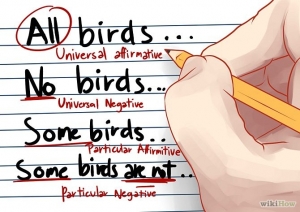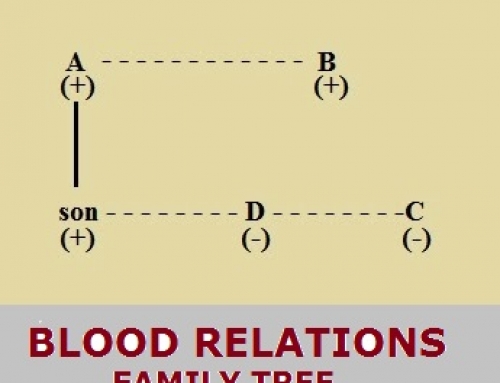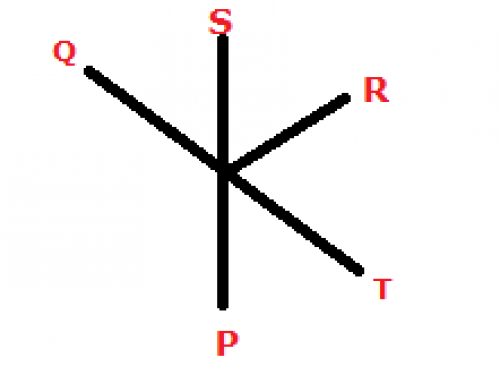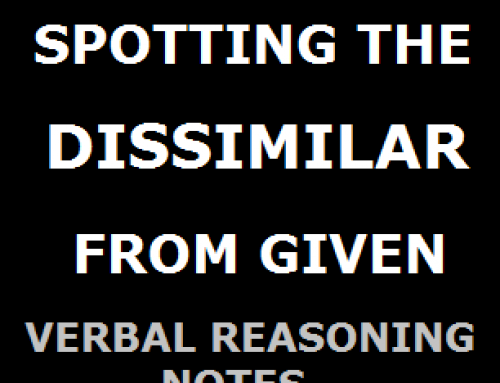The concept of ‘Syllogism’ was introduced by Aristotle, it means ‘inference’ or ‘deduction’. Syllogism is important part of almost every competitive exam with Logical Reasoning. These questions are generally easy to solve if correct train of thought is maintained while approaching the question. Since the questions related to syllogism form a promising part of the competitive exams like various bank exams like IBPS, RBI, SBI associate Clerk, RRB as well ass in UPSC CSAT, SSC and others. If candidates go through the following explanation regarding syllogism with little practice and concentration.
First let us look at some basic terms used in the rules of syllogism and try to understand them.Generally, there are two parts in syllogisms – Premises / propositions and Conclusions/inference.
A premise or proposition is a sentence which makes a statement and hence, gives a relation between two or more terms. In logical deductions, any statement is termed as proposition or premise. For example;
- All windows are rods
- No cloth is a bay
- Some students are members
- Some green are not white
There are the following parts of proposition or premise as explained below:
- Subject : A subject is that part of proposition about which something is being said.
- Predicate : A predicate is the part of premise denoting that which is affirmed or denied about the subject.
Qualifiers:
Premises usually start with the words- All, No, Some and Some–not.
- The word ‘all’, has its synonyms which give the same meaning – Every, Any, Each.
- The word ‘Some’ is also replaced by – Many, Few, Most of , More, A little, etc.
Propositions/ Premise in syllogism
Premises are divided into Universal and Particular statements, they are also divided into positive and negative statements. The following are basic types of premise:
i) Universal positive proposition: A premise of
the form
- All girls are beautiful.
- All bulbs are tigers.
ii) Universal negative proposition : A premise of the form [No S is P] is known as a universal negative proposition. It is denoted by letter “E”.For example;
No professor is lazy.- No boxes are bangles.
iii) Particular positive Proposition : A premise of the form [Some S are P] is called a particular positive proposition. It is generally denoted by “I”. For example;
- Some girls are smart.
- Some girls are cats.
iv) Particular negative proposition : A premise of the form [Some S are not P] is known as particular negative proposition. It is usually denoted by the “O”. For instance;
- Some flowers are not orange.
- Some fans are not white.
Inference or Conclusions in syllogisms:
In syllogism, there are two major types of inferences, these are:
1) Mediate inference: In the mediate inference, the conclusion is drawn from two propositions. For instance; if you are given – [All cats are dogs] and [All dogs are animals]. Then the conclusion – [All cats are animals] could be drawn from the given.
2) Immediate inference: When the conclusion is drawn from only one given proposition or premise, it is known as immediate inference. For example; if you are given statement – [All gates are blue], then based upon this statement, the conclusion could be drawn – [Some blue are gates]. This type of conclusions are known as immediate inference.
Rules for Deductions in Syllogisms
- Every deduction should contain three and only three distinct terms.
- If both the premises in the given statements are negative, No Conclusion can be drawn.
- If both the premises are particular, no Conclusion can be drawn.
- The middle term (the word that occurs in both the premises) must be distributed at least once in the premises.
- If one premise is negative, then the conclusion must be negative.
- If one propositions is particular, then the conclusion must be negative.
- No term can be distributed in the conclusion, if it is not distributed in the premises.
Syllogism Examples with Answers
We take explanations of each major type of profile under syllogism examples to understand the deductions in syllogism.
Example 1:
- All dogs are cats.
- All cats are pigs.
As the first statement is universally affirmative sentence and so is the second sentence. The type of sentence that satisfies both of the given statement, is Universal affirmative statement, that is a statement with ‘All’. Hence, the answer will be
- All dogs are pigs.
Note here that, the statement can’t be – ‘All pigs are dogs’, because ‘pigs’ is not distributive in the given premise. Because if we take ‘All pigs are dogs’ then the subject ‘pigs’ will be distributed. Hence, the conclusion ‘All pigs are dogs’ is wrong.
Example 2:
- Smoking is dangerous.
- Rash driving is dangerous.
By following the given premise, it can be concluded that ‘Smoking is rash driving’.
Example 3:
- All dogs are cats
- All pigs are cats
In the statement 1, Universal affirmative sentence is indicated and hence, the subject ‘dogs’ is distributed and the predicate ‘cats’ is not distributed. In second statement, the universal affirmative sentence, has the subject ‘pigs’ as distributed and predicate ‘cats’ as not distributed.
The middle term ‘cats’ is not distributed in either of the two statements. Hence, we cannot draw any conclusion from the given case.





